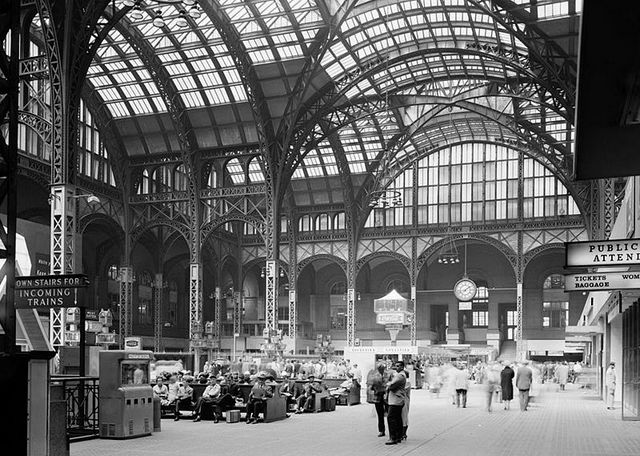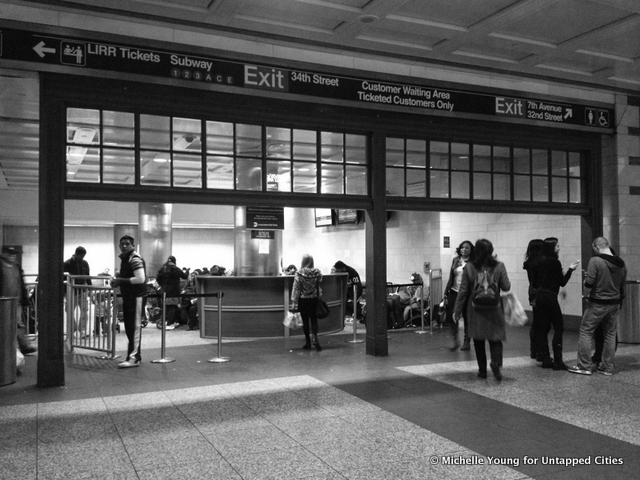 Photo from Library of Congress
Photo from Library of Congress
For more than a year, we’ve been bringing intrepid New Yorkers and visitors on a hunt of the architectural remnants of the original Pennsylvania Station still viewable inside and around the current station. There are few people that contest the tragedy of the demolition of Penn Station, which began on October 28, 1963, after the Pennsylvania Railroad found itself in serious financial trouble. The McKim, Mead and White masterpiece, only 53 years old, became a martyr for the landmarks preservation cause when the air rights to Penn Station were sold to accommodate Madison Square Garden, that perpetually moving entertainment venue.
As history repeats itself, the current battle for Penn Station usually includes the relocation of Madison Square Garden once again to accommodate a modern transportation that might better accommodate the needs of the 600,000 people that traverse through Penn Station each day – more people daily than the number that pass through the three major New York City airports combined. New plans generally also involve returning natural light to a station that has been illuminated by fluorescent lighting for decades.
As the latest grandiose plans get revealed for the station’s rehabilitation, it is more than likely that any improvement to the subterranean maze will require the station to remain operational during construction, which was the case during the 1960s re-do of Penn Station. This unique requirement has allowed many artifacts and remnants still standing within the current station.
Below are 5 of our favorite remnants (there are many more to be discovered on our upcoming tour:
1. Cast-Iron Waiting Room Partition

This cast-iron partition in the Long Island Railroad waiting room is the only remnant MTA spokesman Sal Arena admitted existed, although the MTA website acknowledges that “Fragments of the old Penn Station are hidden in the lower depths of the building that replaced it.”) Most commuters pass by or under it repeatedly without knowing it to access the seats or bathrooms behind. The entryway was saved because it was walled off during the demolition and left untouched and forgotten for 30 years:





